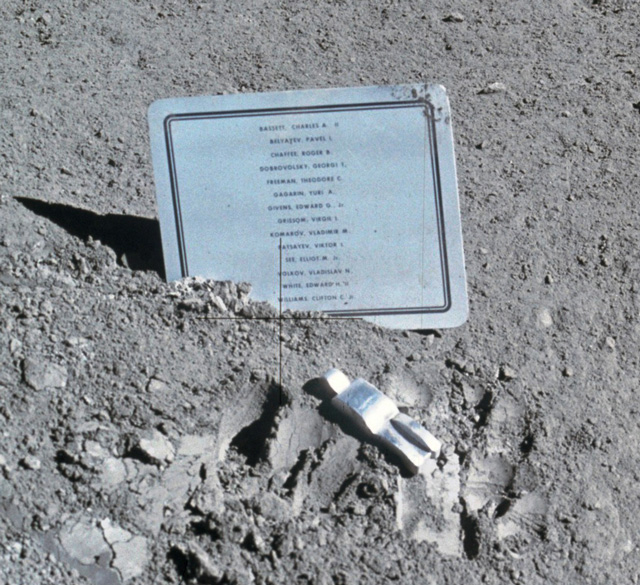Coming to Kindle and Smashwords

November 2013
Jan 4, 2013
Paul Frees tries out narration for the Haunted Mansion
CIA Official Who Destroyed Torture Tapes Squirms at Zero Dark Thirty Abuse

Actors Kyle Chandler, left, and Jason Clarke portray CIA officials involved in torturing detainees in Zero Dark Thirty. A retired agency officer who destroyed actual video footage of the torture has a beef with the film’s portrayal of interrogations. Photo courtesy Sony Pictures Publicity
Jose Rodriguez thinks the new movie about the hunt for Osama bin Laden is “well worth seeing.” But the retired CIA veteran has reservations about its gut-churning portrayal of the CIA’s treatment of detainees. Which is rich, coming from the man who destroyed the video footage documenting many of those brutal agency interrogations.
In an op-ed for the Washington Post on Friday, the former chief of the CIA’s Counterterrorism Center and its clandestine service takes issue with Zero Dark Thirty’s torture scenes. Those scenes are admittedly hard to watch. They show terrified, disoriented and bloodied detainees kept awake for days on end by having their arms painfully suspended from the ceilings of secret jails; stuffed into tiny wooden boxes when they don’t cooperate with their inquisitors; and waterboarded on soiled mattresses while interrogators bark questions. They also largely match up with the minimal public disclosure of how the post-9/11 program actually operated.
But they offend Rodriguez, who describes himself as “intimately involved in setting up and administering” a program he has steadfastly denied amounted to torture. Most CIA detainees weren’t subject to what he euphemistically calls “enhanced interrogation.” Those who were experienced “harsh measures for only a few days or weeks at the start of their detention.” And director Kathryn Bigelow left out all the bureaucratic red tape CIA interrogators encountered: “To give a detainee a single open-fingered slap across the face, CIA officers had to receive written authorization from Washington.”
Except there’s a problem with Rodriguez’s account that he sidesteps in calling the film inaccurate. While at the CIA, Rodriguez himself destroyed nearly 100 video recordings of brutal interrogations, including those of two al-Qaida figures who most definitely were subjected to “harsh measures,” Abu Zubaydah and 9/11 architect Khalid Shaikh Mohammed. If Bigelow and screenwriter Mark Boal are in the dark about torture — like the rest of the country — Rodriguez is a big part of the reason why.
It took a Justice Department inquiry to reveal even the outlines of the destruction of the torture tapes. In 2009, the government disclosed that Rodriguez in 2005 ordered the destruction of 92 videotapes of interrogation footage totaling hundreds of hours’ worth of footage. As the New York Times noted, Rodriguez’s order came at a time when “Congress and the courts were intensifying their scrutiny of the agency’s detention and interrogation program.” The destruction was a deliberative process: Rodriguez wrote in his memoir last year that he used a shredder packing “five spinning and two stationary blades” capable of chewing through “hundreds of pounds of material in a single hour.”
Rodriguez claims he ordered the destruction on his own after his bosses vacillated on whether the tapes ought to be destroyed. His stated rationale for liquidating evidence that was relevant to a potential criminal investigation was to protect his interrogators. It had the effect of destroying a major aspect of the historical record. When Rodriguez swears in his op-ed that the torture program worked as he says it did, he left observers with few independent ways to check his claims.
Ultimately, a Justice Department special prosecutor opted to abandon criminal cases against CIA interrogators who had received authorization from senior government officials for the interrogation program. Rodriguez himself never faced criminal charges for the destruction of the tapes.
Despite the destruction, Rodriguez’s insider account isn’t the only one that has survived. Phil Zelikow, a former aide to Secretary of State Condoleezza Rice, told Danger Room last year that the CIA’s brutal interrogations amounted to “war crimes,” an assessment he conveyed during an internal 2006 debate about the CIA program. One of the CIA interrogators involved in the program’s early days has lamented that he “destroyed a man’s life” through the abusive techniques.
There are other reasons to doubt aspects of Rodriguez’s accounts. He writes that “When the detainee became compliant, the techniques stopped — forever.” But three powerful senators who helped helm a four-year classified study of the CIA program, Dianne Feinstein, John McCain and Carl Levin, wrote to the CIA on December 19 that “The CIA detainee who provided the most accurate information about the courier [to Osama bin Laden] provided the information prior to being subjected to coercive interrogation techniques.”
Feinstein, McCain and Levin have now turned their focus to the CIA’s cooperation with a movie that they believe conveys the mistaken impression that torture led to the killing of Osama bin Laden. Rodriguez makes no secret of what he thinks about Congress prying into the CIA’s dark corners. He singles out a scene in Zero Dark Thirty when an agency employee threatens to alert a congressional committee about her boss’s seeming failures. “Now that,” Rodriguez writes, “would be torture.”
Alt Text: 10 Things Nobody Cared About in 2012

Every year, pundits planetwide dust off their search engines and pull together lists of The Best and The Worst of the preceding trip around the sun. I feel that in the rush to name the best videogames and the worst political scandals, something gets lost in the shuffle: things that aren’t that bad, aren’t that good, and frankly aren’t that interesting anymore.
So, for the second year in a row, I’m providing a vital listing of The Top 10 Things Nobody Cared About in 2012.
 1. The PlayStation Vita
1. The PlayStation VitaReally, nobody cared about portable console gaming in general in 2012, but the Vita took the brunt of the widespread indifference, failing to match even the relatively modest sales of the original PSP. The reason is simple: 99 cents is less money than forty dollars. Sure, a dedicated console game might be better, but look at it this way. If a cheap iOS game is like a Big Mac, and a high-end Vita game is like some Waygu-and-stilton masterpiece from a restaurant in the valet district, then that upscale burger would cost $160. Do they really make burgers that good?
2. Johnny Depp
Hey, everybody, guess what! In 2012, Johnny Depp starred in a quirky Tim Burton movie where he played an outcast misfit with heavy makeup effects and a weird haircut! Boy, it’s wonderful that we have someone who’s willing to play such off-beat, unusual characters that are completely like any others except all the other characters he plays! Unfortunately, in Dark Shadows, Depp was working with such weak source material that no amount of head-cocking, slow blinking and accent-affecting could save the movie, and people lined up in droves to not care about it. What might bring him back to the limelight? No promises, but a filmed deathmatch among Edward Scissorhands, Jack Sparrow, Hunter S. Thompson and the rest of his characters would definitely put me in a theater seat.
3. The Higgs Boson
The search for this fundamental subatomic particle was the equivalent of the old TV series Moonlighting or the slightly less-old TV series The X-Files. We desperately wanted the male and female leads — or “particle physicists” and “the Higgs boson” — to finally admit their love and fall into each others’ arms, but once it actually happened we promptly lost interest. Once you take out catchy terms like “the God particle” and the infinitesimal chance of the end of the universe, the story is just “scientists find particle they pretty much already knew existed.” Yawn.
4. Sarah Palin
After Obama was elected in 2008, everyone prayed that Sarah Palin would make a White House bid in 2012. Conservatives wanted to see her in the Oval Office, liberals wanted to see her crash and burn, and talk show hosts wanted easy material for their monologues. When she resigned from the governorship of Alaska in 2009, this further fueled the craving for Candidate Palin, even as conservatives had to admit that “She Quit the Last Post She Was Elected To” isn’t the best campaign slogan. But she didn’t run, and now she’s just another talking head on TV, not serious enough to be taken seriously, and not loony enough to be taken seriously by loonies.
5. Ukuleles
If I were a competent prognosticator, I would have looked at the launch of YouTube and immediately run out and bought shares in ukulele manufacturers. Ukuleles are cheap, easy to play, kitschy, and most importantly are the simplest way to create an ironic not-quite-parody of a popular song that everyone’s already tired of hearing. The lazy ukulele cover isn’t dead — do a search on “gangnam style ukulele” if you need proof — but it’s increasingly difficult to believe that anyone cares about them except maybe, maybe the ones actually playing the ukuleles.
6. Superman
Superman films have the same problems as Jesus’. Everyone knows the basic story. If you tell it faithfully, nobody wants to see it except hardcore fans. If you mess with it too much, then you just piss people off. However, Superman doesn’t have the advantage of getting to decide what happens to you after you die, so he doesn’t have enough hardcore fans to generate much interest. With the upcoming Superman movie being the second in a row where most of the advance press is about the appearance of the title character’s crotch, it’s clear that if caring were Kryptonite, then the overall cultural interest in Superman would give him a mild headache and cottonmouth.
7. Siri
Let’s not pretend that everything Apple comes up with, or has come up with, is legendary, game-changing or, you know, useful. Siri sounds good on paper, with maybe a 75 percent chance of both understanding your question and being able to answer it usefully, assuming you’re asking the sort of question Siri can answer. But having to repeat yourself or getting useless information 25 percent of the time steadily eats away at the sense of wonder and awe. Even the DMV is only completely unhelpful 23 percent of the time.
8. Planking
I’m not sure this belongs on the list. Not because people still care about it, but because it’s arguable whether anybody really cared about it in the first place. I think I saw maybe two planking photos that weren’t in the context of “Hey, there’s this thing called planking, isn’t it dumb?” posts. Like “crushing,” “rainbow parties” and “Ron Paul,” this may have just been something someone made up to have something to hate, and a few lost souls obliged. Having said that, whatever heat it once had has long since escaped into the atmosphere.
9. Michael Pollan
I went to a party in Berkeley the other week, and the unthinkable happened: Nobody mentioned The Omnivore’s Dilemma. I’m not saying the book has lost all influence. After all, we were still snacking on free-range turkey breast slices with microfarmed goat cheese on fair trade, artisanal, organic, hand-pummeled zwieback. But nobody felt the need to comment on the fact that we were doing so, much less defend their shopping choices by quoting extended Pollan passages about how pastured eggs are so delicious because the chickens eat larvae out of cow poop. So while Pollan isn’t precisely irrelevant, at least it’s now possible to care about food without so much caring about him personally.
10. The Casual Vacancy
“Wait a second,” I pretend to hear you say. “Rowling’s first adult novel has sold over a million copies! There were all sort of articles written about it!” That, my compliant imaginary objector, is one of the central paradoxes of Western culture. Something can be lucrative, famous, even ubiquitous and still not actually generate enough caring to send a concern-powered bicycle three blocks. Did anyone ever really care about Jewel’s poetry? About Madonna’s book of softcore porn? About El Debarge’s entire career? Of course not, and nobody cares that the author of books about chocolate frogs and sorting hats also wrote a book about whatever this book is about.
More Amazing Facts To Blow Your Mind by AsapScience
“What’s that noise? Oh, it’s just the sound of your brain exploding after hearing these facts…”
In “More Amazing Facts To Blow Your Mind”“, Mitchell Moffit and Gregory Brown of AsapSCIENCE share some simple but impressive facts
Humorous Photographic Street Art by Mentalgassi
By EDW Lynch on January 3, 2013
Berlin art collective Mentalgassi specializes in large scale photographic street art with a humorous bent.
via
Fallen Astronaut, A Figure Sculpture That Was Left on the Moon in 1971
By EDW Lynch on January 3, 2013

“Fallen Astronaut” is a 3 inch tall aluminum sculpture of a human figure was left on the moon in 1971 by Apollo 15 astronauts. Created by Belgian artist Paul Van Hoeydonck, the sculpture is a memorial for astronauts and cosmonauts who have died in the pursuit of space exploration
Rotting Soviet-era themepark in the heart of Berlin
Cory Doctorow at 9:18 am • 13 •
• 




Dark Roasted Blend has a beautiful gallery of Spreepark PlanterWald (originally called Kulturpark Planterwald) a Soviet-era abandoned themepark in central Berlin, which is gracefully rotting away. This is a Boing Boing/Cory Doctorow trifecta: abandoned themeparks, Soviet kitsch, and urban exploration. Yes, please!
 •
• 




Dark Roasted Blend has a beautiful gallery of Spreepark PlanterWald (originally called Kulturpark Planterwald) a Soviet-era abandoned themepark in central Berlin, which is gracefully rotting away. This is a Boing Boing/Cory Doctorow trifecta: abandoned themeparks, Soviet kitsch, and urban exploration. Yes, please!
Subscribe to:
Comments (Atom)





